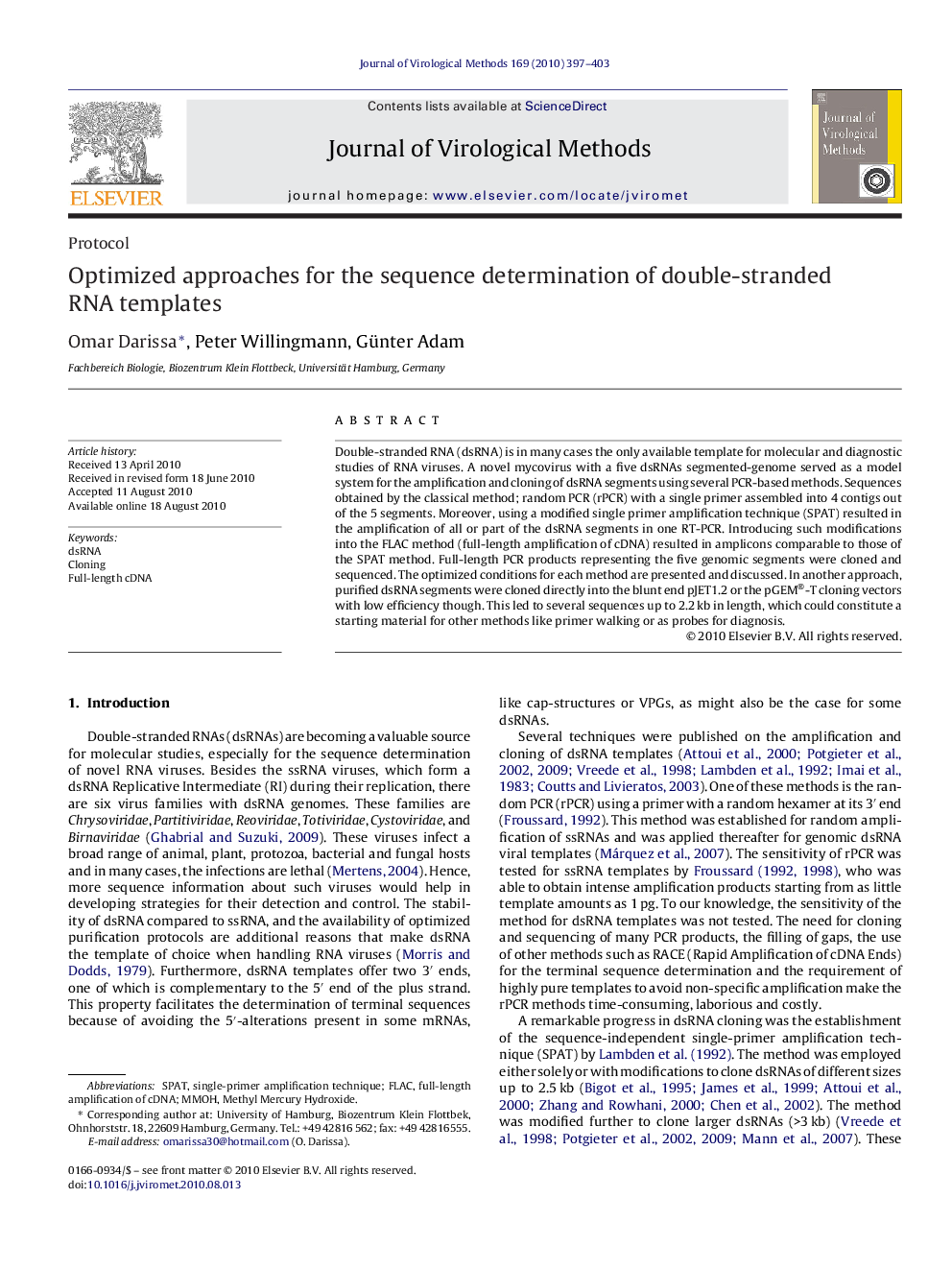| کد مقاله | کد نشریه | سال انتشار | مقاله انگلیسی | نسخه تمام متن |
|---|---|---|---|---|
| 3407025 | 1223614 | 2010 | 7 صفحه PDF | دانلود رایگان |

Double-stranded RNA (dsRNA) is in many cases the only available template for molecular and diagnostic studies of RNA viruses. A novel mycovirus with a five dsRNAs segmented-genome served as a model system for the amplification and cloning of dsRNA segments using several PCR-based methods. Sequences obtained by the classical method; random PCR (rPCR) with a single primer assembled into 4 contigs out of the 5 segments. Moreover, using a modified single primer amplification technique (SPAT) resulted in the amplification of all or part of the dsRNA segments in one RT-PCR. Introducing such modifications into the FLAC method (full-length amplification of cDNA) resulted in amplicons comparable to those of the SPAT method. Full-length PCR products representing the five genomic segments were cloned and sequenced. The optimized conditions for each method are presented and discussed. In another approach, purified dsRNA segments were cloned directly into the blunt end pJET1.2 or the pGEM®-T cloning vectors with low efficiency though. This led to several sequences up to 2.2 kb in length, which could constitute a starting material for other methods like primer walking or as probes for diagnosis.
Journal: Journal of Virological Methods - Volume 169, Issue 2, November 2010, Pages 397–403